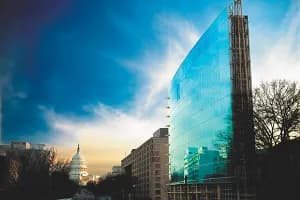Like any business, associations often struggle with their identity. Are they projecting a strong image to members? Do members understand what they do and offer? Is their role as "the voice for real estate" getting through to members and consumers?
Those were the questions the Washington Association of Realtors® set out to answer when it launched its rebranding project in 2004.The spark behind the project was findings from research that showed that members were confused about what products and services they received from their local, state, and national Realtor¨ associations.
Although the logo redesign was just one aspect of the association's larger rebranding effort, it had the largest impact on members. Here's how it was done, with some insider tips from Steve Klaniecki, association communications director.
How we got started
Phase one was discovery. We reviewed all the documents that describe what we do and who we are--our mission statement, history, unique services, future goals, strategic plan, and membership survey--to determine our core identity in terms of core attributes. We also went to the members for input. We used our executive committee and our communications committee as focus groups and asked our board of directors to write down the top five brand attributes of the association today--and what they would like the top five attributes to be in the future. They wanted our attributes to be professional, knowledgeable, innovative, responsive, and focused.
Although attributes don't directly lend themselves to a graphic interpretation, they do influence the tone of the logo, its overall feel, and its expression.
From our attributes, our freelance designer created various logo designs and sample taglines that would become part of the logo. At the end of this phase, the communications committee selected two logos for further development.
Our goals for the new look
We wanted a distinctive look that would reflect the professionalism of our association, would be flexible enough for every department to use, and would work well in print and on our Web site. The logo had to be an icon that would instantly define what we represent and set us apart from the National Association of Realtors® and the local associations.Members voices were heard
The elected leaders made every major decision every step of the way. It was a long and painful process, but I think it was the best way to deliver a product truly reflective of our association and our membership.
Of course, too many cooks can spoil a logo, and we had some pretty bad ideas coming from committee members, but the designer got them back to earth. By the time we got the logos down to two rough concepts, I knew we could live with either one.
In the end, the logo I liked best did not get selected, but the logo needs to be what the members want and will respond to, not what the association staff wants.
The fundamental question of who should make the final decision became an unexpected hurdle. Our governing documents make it clear that the executive committee has the authority to make marketing decisions, but some leaders wanted the decision to go to the 175-member board.Members love the new look?
They love it. There was a lot of controversy over the change, but once they saw the new logo in print, they got it. Now we'll be able to project our image and what we stand for to our membership, our lawmakers, and the general public.
We have a fresh new start. We know who we are, and we're excited to project it--all this from a few squiggly lines and a new tagline.
What you want in a logo designer
Klaniecki recommends finding a "branding" specialist--someone who has the ability to determine what your brand attributes are--instead of a typical graphic artist. There's a difference between logo design and branding; with branding, you must first discover and define who you are and then project that image. "My niece attending community college can draw a pretty good logo, but she has no real concept of branding or figuring out what a company stands for," says Klaniecki.
For small associations that can't spend $8,000 on their rebranding campaign, a college student or a local graphic artist may better fit the budget; the attribute self-analysis can be done in-house.
If you do have the budget to work with a design or branding firm, look for one that has several artists and a portfolio that represents nonprofit groups and associations. "Now that I've been through this, I would ask designers how they intend to discover your brand attributes and how they plan to sell the concept to your leadership," advises Klaniecki. The firm's method for this process has to match how your association functions, he says. For example, it needs to include ways to solicit and process feedback from committees, members, and staff. "It takes a very special designer to work with a large committee and not let it get out of hand. The committee members all think they're experts in marketing; so they must be steered to the right direction."
Last, Klaniecki recommends looking for a designer who is headstrong and will tell you when you're wrong. "What's the use of hiring specialists if you're going to make them yield to your will?"








